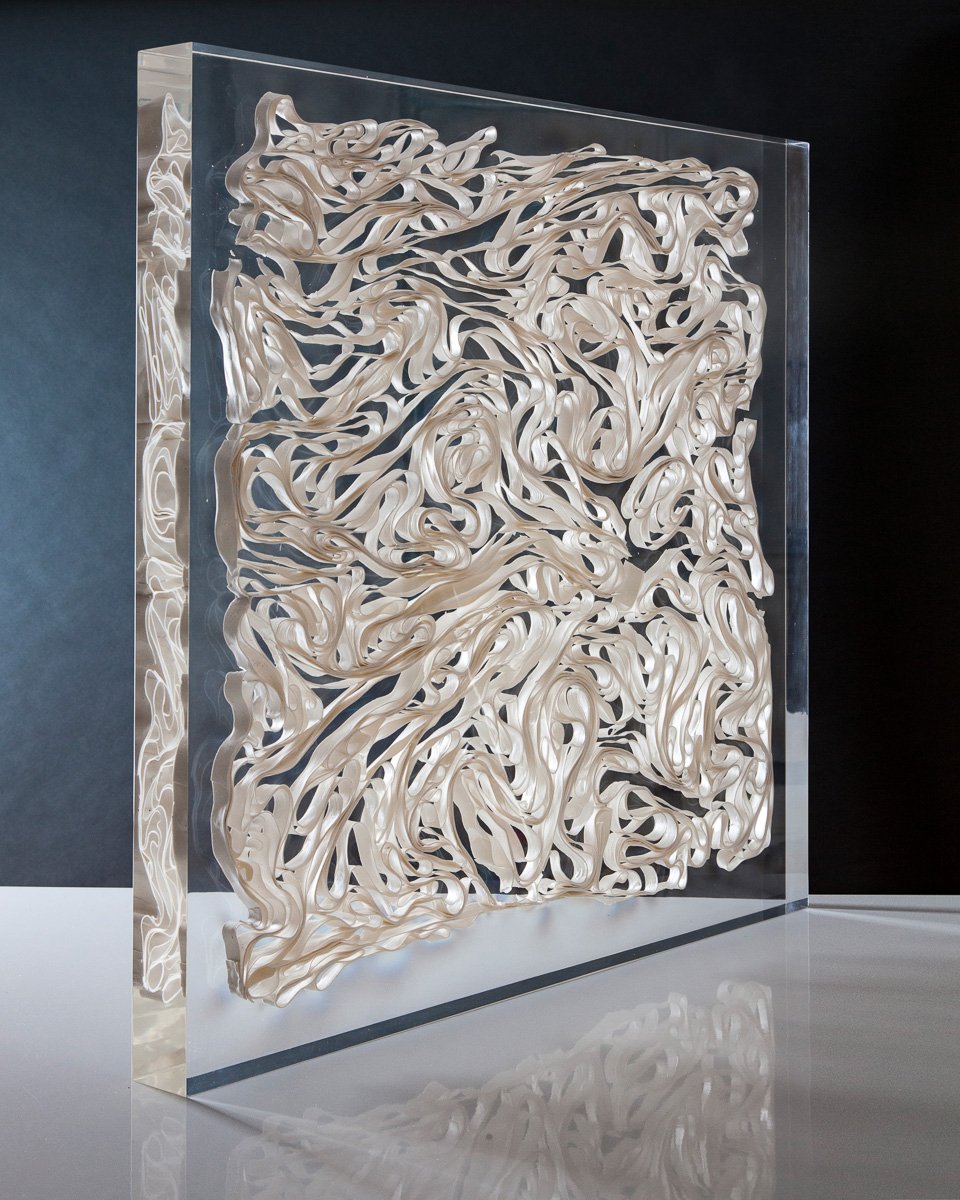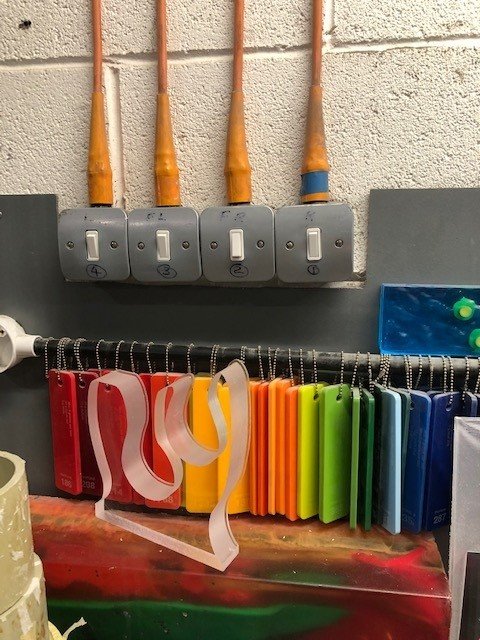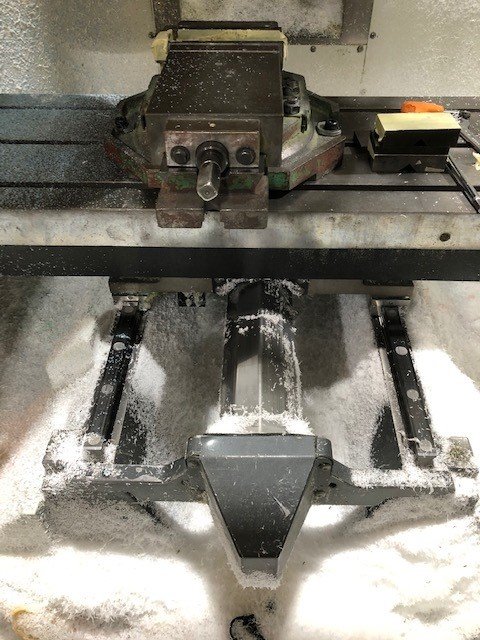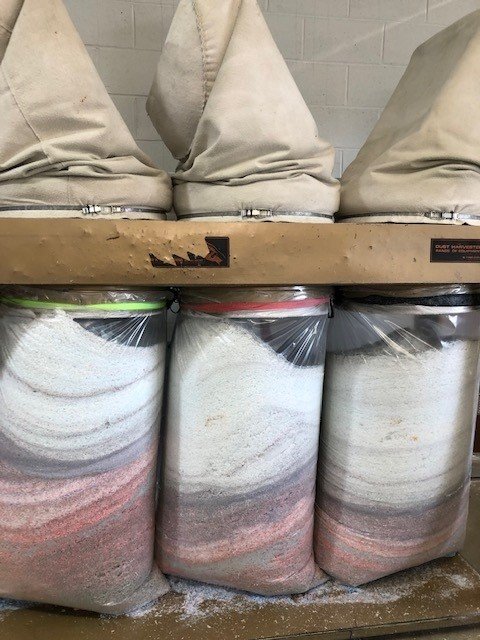Suspended Porcelain Blocks
Waste.
I really don’t like waste, I tend not to throw away; some of my clothes predate my husband of 30 years and we have drawers of things that might come in handy. Like many people, we obsess about the content of materials we use, our consumption, and our waste.
We must talk about waste when talking about using acrylic (a form of plastic) in artwork. David Attenborough drew our attention to the damage plastic has inflicted on the planet and created an abhorrence of plastic, but the nuanced message about plastic is really about its longevity, the creation of waste and its disposal, as well as thoughtless consumerism. The rational argument for plastic is actually in its longevity; if it can be made efficiently with a component of carbon and used it for things that need to last, the carbon is captured.
Plastic rubbish washed up at the head of Loch Fynne
Plastic as luxury.
A year of collaborating with a Paris fashion house to re-design their iconic perfume bottle in porcelain for a limited edition came to an abrupt end with the question of “what is luxury?”. The chosen porcelain master design was too tricky and detailed to be repeatedly handmade or cast, but it could be 3D printed in a material resembling porcelain with a small carbon component. We agreed it was stunning but the marketing department at the fashion house would not budge: “plastic is not luxury”. I thought the luxury was in its provenance, the artist’s work, the technological achievement, its limited production and, of course, its impact as a design. Apart from there being plenty of examples of plastic in fashion, this was designed to be collectable and treasured, never to be thrown away.
Suspended porcelain.
A couple of years later, I was keen to return to Midton, the updated acrylic design and manufacturers in rural Scotland, which in 2012, had managed to embed my porcelain structures unscathed, under huge pressure to create glass-like clarity and it seemed a miracle to us all at the time that it was possible.
Suspended porcelain
Under great scrutiny for making a material which does not biodegrade with a carbon component, staff at the factory explained how they have combed through their processes, their employment, their buildings, their energy and their waste, to build efficient production with good values for people and the environment.
And importantly they are very excited and playful with what they can do with their material; always listening and looking and challenging and investing to bring forward innovation. After much playful testing, we have kept this first range simple and anticipate adding more complementary sizes and colours at each cycle of making.
Why put porcelain in acrylic?
Porcelain has a remarkable quality of being slightly translucent and seems to absorb and hold light in a luminous way. Very thinly made porcelain with exposure to light makes this quality more apparent so I have long been experimenting with how to hold fine porcelain to the light without it being very vulnerable to breaking. I managed with my porcelain mobius and helix sculptures; the thicker outer bands support finer inner strips which can then play with the light but necessarily the porcelain strips were not as fine as they could be.
Finding it was not possible to put porcelain in glass, it took a lot of persuasion to get a busy acrylic manufacturer to have a go at embedding and we were thrilled with the result. Not only did they hold together without splitting the acrylic or damaging the porcelain, the porcelain structure inside takes on a new life; from some angles it is magnified and from others it is reflected creating surprising illusions and effects. It throws beautiful shadows and glows with light. It is like higher definition porcelain.
So I try to explain where I failed in Paris: like porcelain, plastic has longevity, unlike porcelain, it is remarkably efficient to produce, what is more, it won’t’ break (causing it to be pointlessly thrown away) and these blocks show off an innovative technological achievement marrying two contradictory materials together to show them both off in a new light. We don’t know of anyone else who has done this. Each block contains a very small amount of carbon. Please don’t throw them away.
What is acrylic?
Plastic is a generic term for synthetic and semi synthetic materials with a petroleum base, of which acrylic (polyacrylate) is one. The cast acrylic is made up of two components, monomer (a by-product from oil) and polymer. Unlike resin and many plastics, acrylic is 100% recyclable and can remain in use indefinitely either through repair, reuse or deconstruction: it can be re-heated and re-moulded without its structure being altered. It is very strong and can be made crystal clear.
How is porcelain embedded inside?
In Scotland, the acrylic is hand-made, poured into the hand-built recycled cardboard moulds, the porcelain is laid on a soft layer of acrylic and more is poured on top. After the mould is taken away, the “rough cast” is still uncured and semi opaque due to numerous air bubbles. The blocks are put into curing ovens over night under huge pressure (145 psi) and heat (approx. 70 degrees Celsius). Miraculously, the porcelain stays in tact but is still not very easily visible until the crystal clear block is cut and polished. For these blocks with a colour trim, the blocks are then placed in a mould again for a colour acrylic surround to be added, before curing and polishing again.
How to care for these sculptures?
The acrylic blocks should be kept away from direct sunlight or heat source. The acrylic can be carefully cleaned with warm soapy water and dried with a non abrasive soft cloth.











